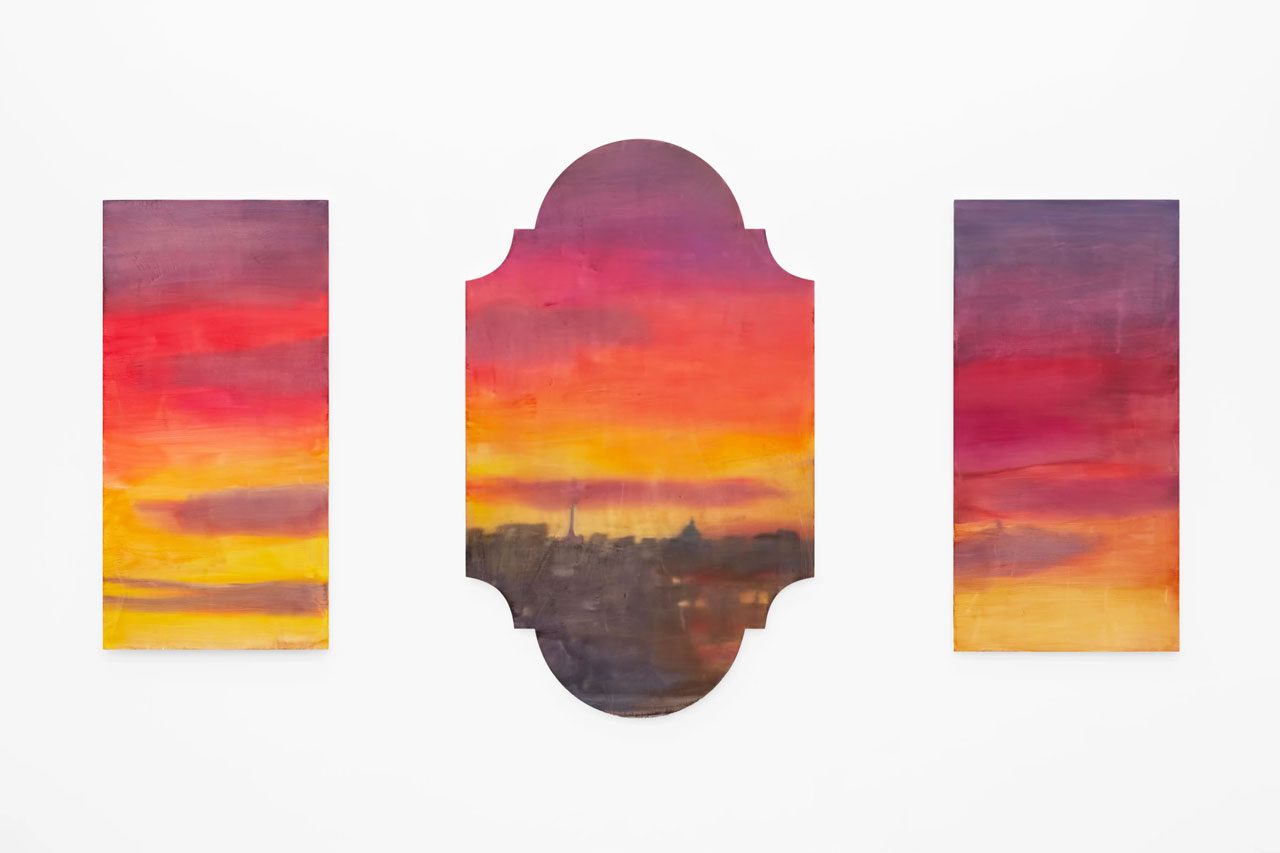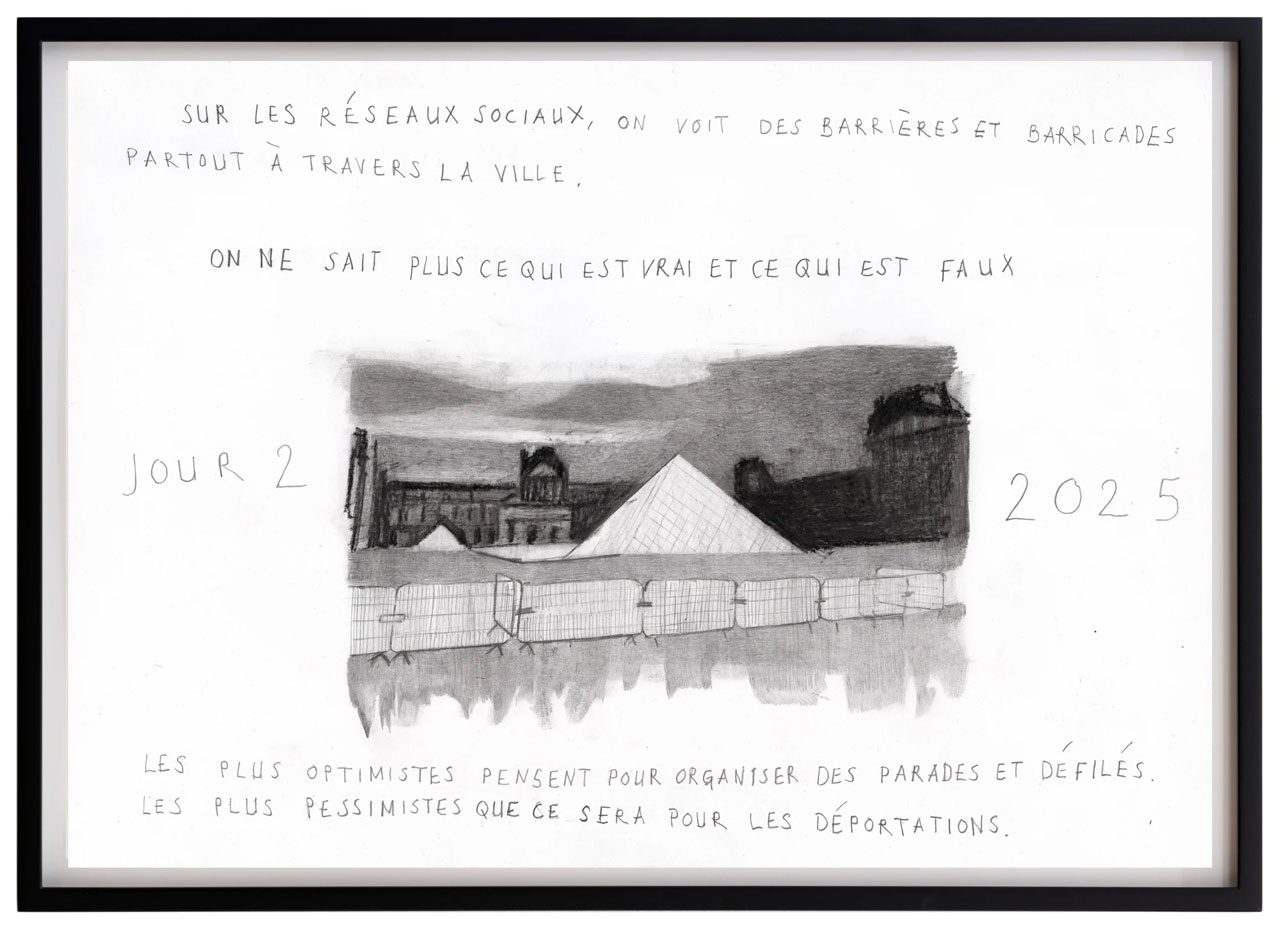PRESENTATION: Marc Bauer-L’Avènement, January 2025
Marc Bauer creates drawings that explore ideas of memory and history, both personal and collective. Speaking about his practice, Bauer notes that ‘painting and drawing is a way for me, and by extension the viewer, to comprehend reality, in all its complexity – subjectively, politically, symbolically. It also allows me to show how history, memory and shifting power structures shade the present moment.’
By Dimitris Lempesis
Photo: Galerie Peter Kilchmann Archive
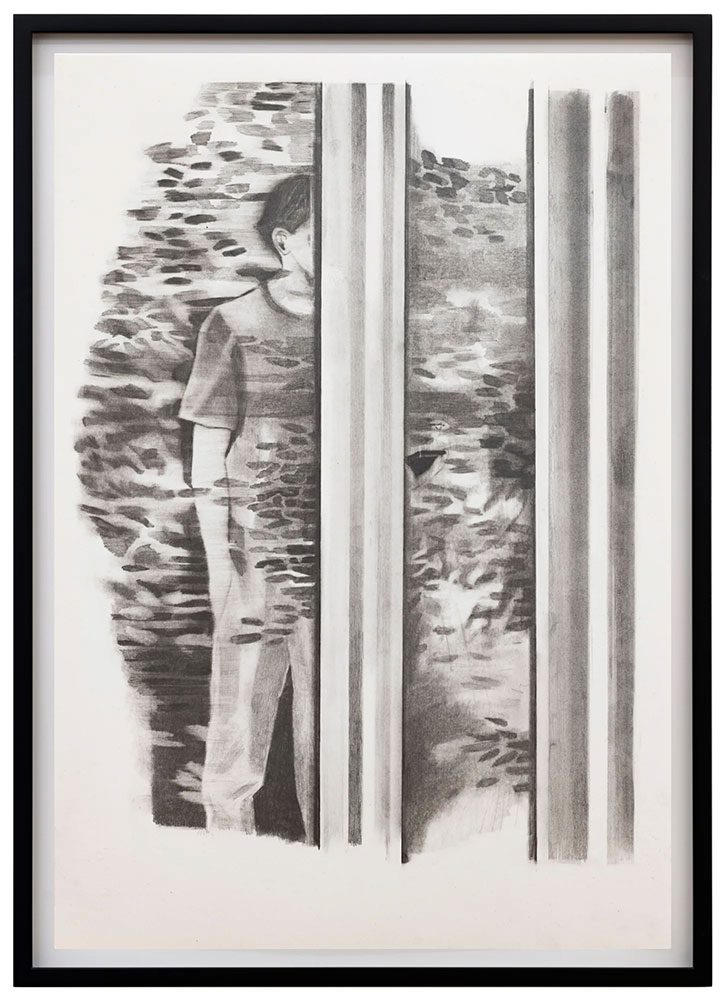
Marc Bauer uses found images as a starting point for drawings realised as site-specific installations that combine works on paper with illustrations rendered directly onto the walls of the gallery space. While Bauer may take inspiration from a photograph of a historical event, a film still, or an image found on the internet, his drawings are not an exact replication or facsimile. Rather than duplicating a photograph, Bauer instead develops it into something else. Drawing from memory, he creates a world complete with fictional characters and narratives, embedding them in a familiar representation; allowing the viewer to witness an alternative existence through the subjective lens of his own experience. His solo exhibition “L’Avènement, January 2025” provides an opportunity for the artist to further establish his repertoire while continuing to explore unexpected forms and techniques, even for those already familiar with his work. A spectacular body of works including works on paper (both colored and uncolored), as well as paintings, spreads across the gallery’s four rooms. Since the early 2000s, Bauer has developed a drawing-based practice that initially focused on paper but quickly ventured onto other surfaces (aluminum, plexiglass, etc.), gradually occupying the gallery’s walls, exploring ceramics and tapestry, and eventually expanding into animation and painting. His distinct style remains recognizable despite the diversity of medias. The lines are precise and sharp, the white spaces remain present, but color, once subtly hinted at, now assumes prominence and spreads. The term “L’Avènement” is derived from avenir (future) and was initially used in religious contexts, often referring to the glorious return of Christ as the judge of the end times. In the 13th century, it shifted into the political sphere to signify the accession to sovereign dignity. Only later did it come to represent what is to come or what happens. In this agitated context, the term undoubtedly overflows and suggests a latent danger, an imminent rupture, or an (in)evitable shift towards radical regimes. In this environment, Bauer captures several portraits of men and women in their middle years. It is not so much a reflection of a particular lifestyle that drives the ambiguity, but rather the sense that these figures are caught in a vast vulnerability. The delicacy of the pencil strokes touches on downcast, almost internalized gazes, lips closed when words fail, hands hidden in pockets or left hanging limply, no longer caressing a face or encircling a lowered shoulder. These unobjectified figures surrender to the intimacy of familiar, safe interiors, where, despite the comfort, there is a weight of a world outside pressing in. This melancholy is not staged. The figures are genuinely absorbed by the mourning of a reality that refuses to bend to their hopes and desires. Both the viewer and the artist observe, sometimes from the corner of the eye, from behind glass, and are sometimes invited to step into the space, to remember the carefree freedom of coming and going. Here, the use of erasure, those zones of white, of bare paper, becomes hypnotic. These spaces, where the absence of image first questions, then stuns, and ultimately captures the eye, certainly play a new role in the artist’s vocabulary, where they have long served as a powerful evocation of memory’s gaps. These spaces are not of nothingness but of boundaries, places of transition. They are neutral zones where the realities of the figures and those of the viewers could overlap, ensuring the renewal of the gaze and the persistence of a disenchanted image that one does not tire of observing, as it continues to be something to heal and reinvent. To avoid awakening the beast, this hushed, numb atmosphere slumbers in the two works: “L’Avènement, January 2025 I and II ” (both 2025). A low-angle view of the French garden at Vaux-le-Vicomte, in shades of gray, overlooks a salon. The sofa, on the other hand, is viewed from eye-level. These choices of perspectives are not accidental; they allow the viewer to understand that they are both above the dream and spying on reality. An adolescent figure, which could seem detached from the previous works, relaxes into the softness of the cushions, slipping out of the frame at a second glance.
The architectural elements, so prevalent in Bauer’s work, dissolve in this new body of work. However, the garden, with the rigidity / rationality / effectiveness of its design, becomes architecture in itself, a space where culture imposes itself on nature. Its symmetry also recalls certain earlier works exhibited in another solo exhibition, where colored Rorschach forms crowned sleeping boys. The circular motifs, borrowing from Art Nouveau, evoke the organic flowers of Georgia O’Keeffe. Flowers that are vulvas, gardens that become architecture, dreams that function as extensions of reality. Because ultimately, here lies the subject, what surprises and questions: this time fails to flow simultaneously in both the real and the dream. The dream is frozen, paused, an image without movement or promise. And where the dream no longer conveys the comfort of reality, where it is no longer an absolute space of freedom but an embodiment of manic and systemic control, a glass tipped over on the table tells the urgency of destruction, of subverting the orderly. In a series of mosaic drawings, Les résistantes , extends a vocabulary Bauer began developing during his residency at the Menil Collection (2023-2024), six French and German women all lost their lives during World War II for their resistance activities. Their meticulously drawn portraits can only be appreciated up close, and in Bauer’s insistence on provoking a physical closeness with these faces, a sincere affection emerges, shaded by profound respect and immense admiration. Elaborate mandalas in vivid colors surround these figures. It would be misguided to think of them as merely ornamental. Certainly, the ornate arabesques serve to beautify these harsh images, but the purpose of such an exercise is to place these figures in an elastic temporality: first, in the slowness of their creation, which is repetitive and almost meditative; then, allegorically, in the care given to these images, which reactivates their memory; and finally, in the calm contemplation of them. Thus magnified, the resilient viewer spends more time near these icons, ensuring that such struggles are not consumed by a forgetful memory. Inspired by the film “L’Ambassade” a series of dawns in three oil paintings on wood panels transforms one of the gallery rooms. The short film unfolds in a closed setting after a coup d’état, blurring the boundaries between documentary and fiction. The daily lives of political refugees and the couple of ambassadors who host them form the core of the director’s initiative. The voiceover says, “The past is like a foreigner; it is not a matter of distance, but the crossing of a border.” This quote is entirely appropriate when reflecting on Bauer’s career, as his works can only be understood considering multiple influences and inspirations. Drawing from a vast cultural, social, and political history, his works are to be approached both individually, as part of larger sets, and through shifting, surprising connections that require collecting from the tragic memories of the past to observe signs of very real threats. The final images of the film reveal a panoramic view of Paris, which the artist has reinterpreted on two panels with baroque lines similar to those of Cy Twombly, which Bauer discovered at the Menil Collection (Houston, USA). The view, quite muted in Chris Marker’s film, is bathed in brilliant colors in Bauer’s works. Aube Jour 1, Paris and Aube Jour 7, Paris open and close this series. The horizon, though blurred, as though seen through a fogged-up window, stretches across a sky so warm it seems on fire. The lacquered, deep colors, both brushed and fluid, confer an apocalyptic dimension to this breathtakingly beautiful vision. As if this vast sky, observed systematically every day of the same week at twilight, secretly carries all possibilities.
Photo: Marc Bauer, Hilde Meisel Alias Hilda Monte, Les Résistantes, 2024, Color pen and pencil on paper, 45 x 39 cm (17 ¾ x 15 ⅜ in.), 54 x 46.5 cm (21 ¼ x 18 ¼ in.), framed, © Marc Bauer, Courtesy the artist and Galerie Peter Kilchmann
Info: Galerie Peter Kilchmann, 11-13 rue des Arquebusiers, Paris, France, Duration: 17/1-8/3/2025, Days & Hours: Tue-Sat 11:00-19:00, www.peterkilchmann.com/
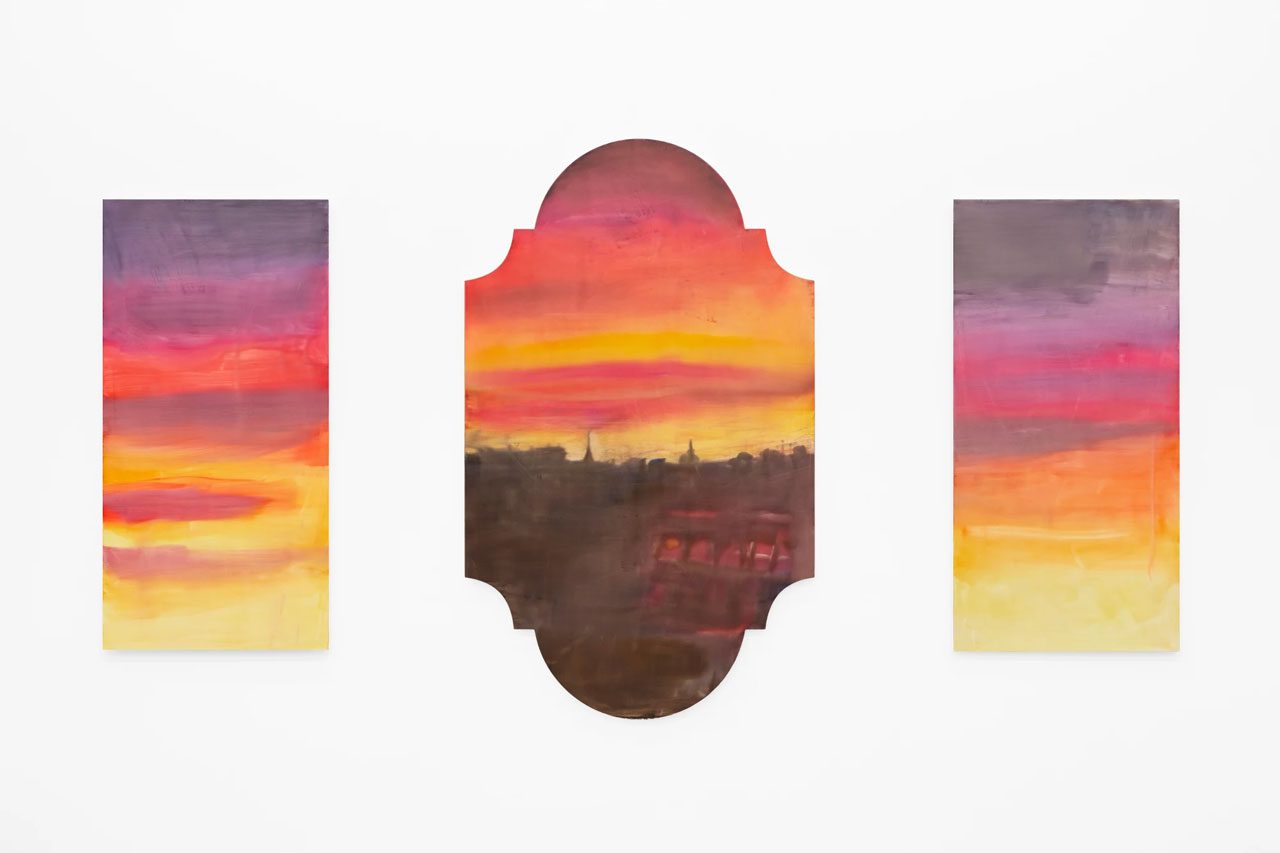
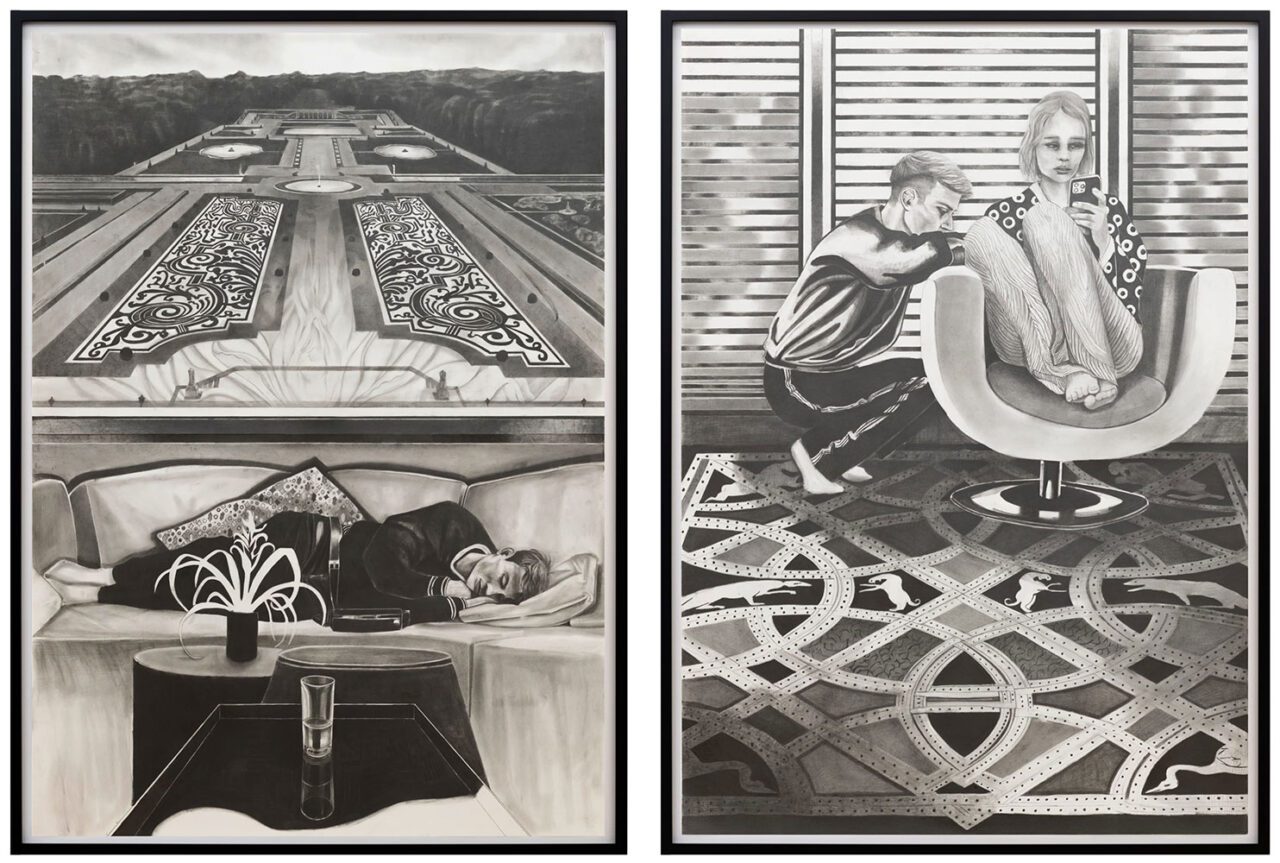
Right: Marc Bauer, Apocalypse de Saint Sever I, 2024, Pencil on Paper, 100 x 70 cm (39 ⅜ x 27 ½ in.), 112 x 80 cm (44 ⅛ x 31 ½ in.), framed, © Marc Bauer, Courtesy the artist and Galerie Peter Kilchmann
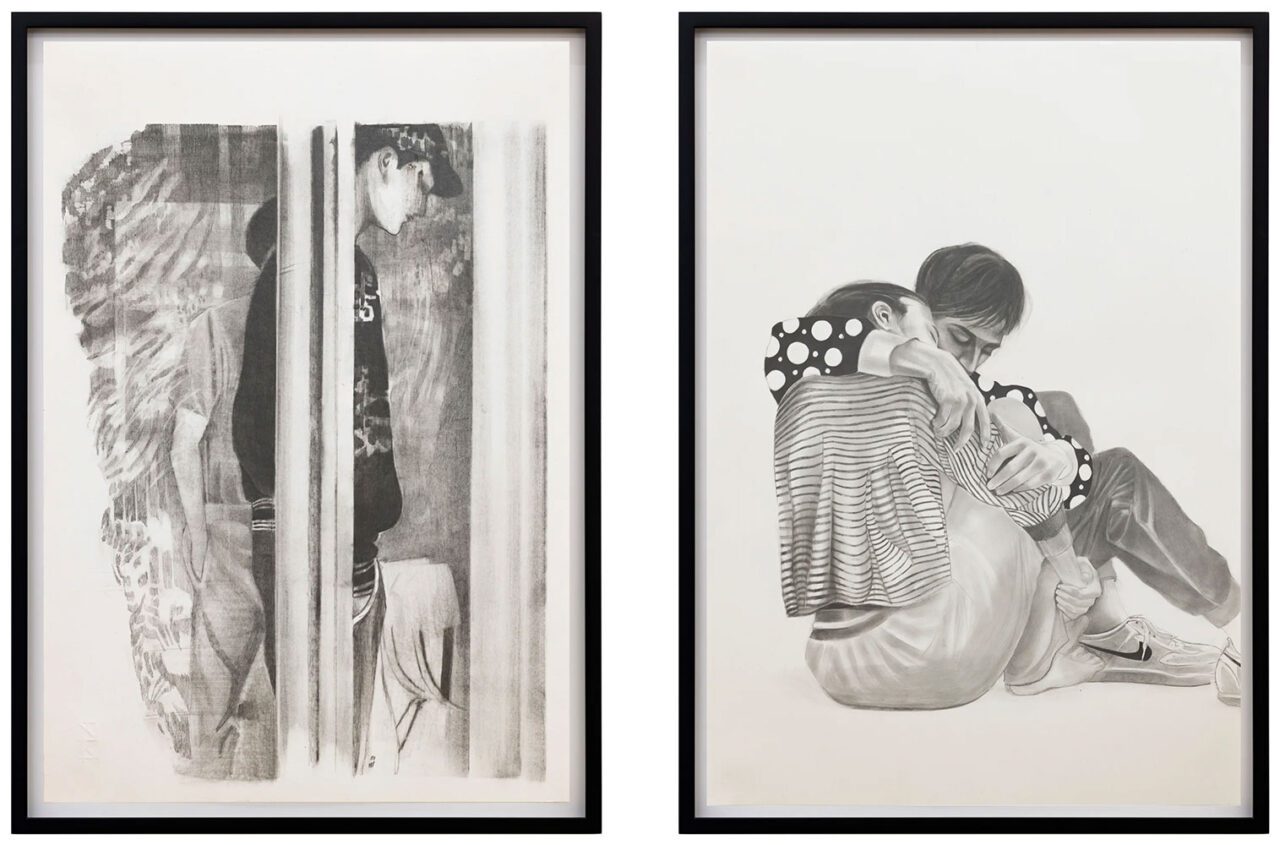
Right: Marc Bauer, Réconfort I, 2024, Pencil on paper, 100 x 70 cm (39 ⅜ x 27 ½ in.), 112 x 80 cm (44 ⅛ x 31 ½ in.), framed, © Marc Bauer, Courtesy the artist and Galerie Peter Kilchmann
